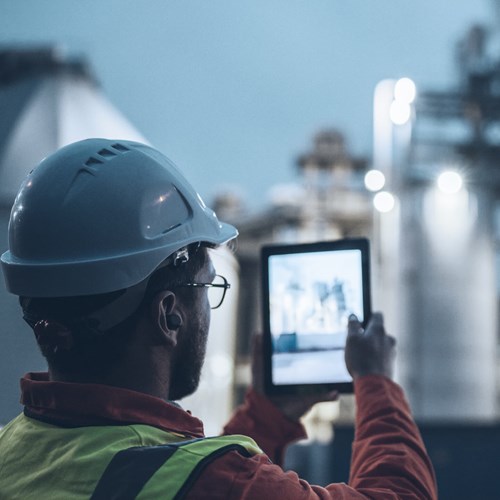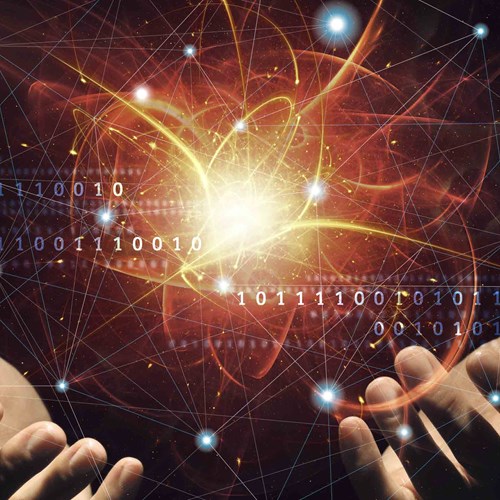From Digital Twin to Digital Lifecycle Excellence
Sustainability and technology are driving change across the entire energy and utilities (E&U) sector. While some organizations are working double-time to reach emissions goals, others are learning to leverage today’s digital tools to meet sustainability targets, improve operations and gain a competitive advantage. This process is known as a digital transformation or a reimagining of an existing business model.
Artificial intelligence, virtual reality, machine learning—these technologies no longer exist within pipe dreams. Today, they’re used in almost every aspect of our day-to-day lives. In the business world, digital innovations allow organizations to respond faster to change. This is especially vital for the E&U industry as demands for renewable energy alternatives and decarbonization rise.
Deploying the right digital solutions can help E&U companies face these growing challenges and prepare for the unpredictability of today’s energy and utilities market. We can look at some of these challenges and see how Siemens’ Digital Lifecycle Excellence allows E&U businesses to turn complexity into a competitive advantage.

By leveraging today’s available technology, companies can create well-developed infrastructure plans that help meet sustainability targets and save on costs associated with operations.
Efficiency matters in the energy and utilities sector
E&U companies bear a tremendous burden to increase sustainability efforts across business operations. The utilities sector alone accounts for almost 40% of carbon emissions, more than any other industry worldwide. With calls for net-zero emissions by 2050, there’s more pressure than ever to prioritize sustainability in business and operating models. While this is a lofty task, leveraging technology is one way E&U companies can put their best foot forward to decarbonize while reducing the risk of non-compliance.
Energy Consumption
By leveraging today’s available technology, companies can create well-developed infrastructure plans that help meet sustainability targets and save on costs associated with operations. For example, building and running a power plant, or any infrastructure, produces large amounts of operational carbon. Once an installation is complete, operational carbon is generated from the energy it takes to power, light, cool, and heat a building. Additional carbon emissions are generated during the production of materials used for construction.
Digital twin software is the best tool for helping companies plan out major projects. Using a simulation-driven approach to design allows businesses to verify plant processes before construction ever begins. Other capabilities include capturing a digital representation of construction areas using laser scanning and reality capture technology to help simulate how equipment or systems will operate during the building process and adjusting to optimize the process as needed. Predicting construction execution can reduce the risk of change orders, excessive production costs and overall energy consumption.
Learn more about Siemens’ Digital Lifecycle Excellence (DLE) solutions
Click here to download the ebookSlow Processing
Implementing new technology is the first step toward more effective processes and improving sustainability, but how can an organization ensure they’re using these tools to their full potential? Integration is critical when utilizing digital tools. Without proper integration between each piece of software, data gets stuck in silos, stopping essential information getting to the appropriate source; leading to slow and inefficient processes.
This Mendix study details how this digital disconnect affects business operations. In the survey, 74% of IT professionals and stakeholders reported having a pipeline of unanswered requests. This resulted in 61% of stakeholders saying IT could not deliver on nearly half of their project ideas.
With gaps in data exchange, businesses can’t communicate effectively or adjust to change fast enough—a significant disadvantage in today’s volatile energy and utilities market. Tools that allow network collaboration can help E&U companies reach sustainability targets while establishing faster workflows.
Compliance and Risk Management
One of the biggest concerns for E&U companies is reducing the risk of non-compliance across an entire enterprise. Already heavily regulated, new calls for net-zero emissions and renewable alternatives have put intense pressure on organizations to develop more efficient processes. On top of that, the use of the cloud and Internet of Things (IoT) devices to store and exchange data has tightened data privacy requirements.
Now, more than ever, it’s important for organizations to execute consistently to prove production methods are compliant. Going forward, E&U companies will need an integrated, traceable system to track, store, and manage data, suppliers, and materials.

Siemens set out to help E&U companies get the most out of today’s technology by developing Digital Lifecycle Excellence (DLE) solutions.
A modern approach to asset management
Leveraging technology that enables the creation of a digital twin or helps drive greater automation can give E&U companies the competitive edge they need to thrive in today’s market. The problem is the market is saturated with hundreds of software options, and overwhelmed business owners are left stringing together several solutions into one process. When these solutions aren’t robustly interconnected and integrated, with seamless data flow, the chance of non-compliance, and even poor product performance, increases.
Siemens set out to help E&U companies get the most out of today’s technology by developing Digital Lifecycle Excellence (DLE) solutions. DLE works as a digital thread to connect the digital world with physical objects or processes. The tools included in DLE work together to organize and consolidate data and present opportunities to increase competitiveness. This means E&U companies can add solutions throughout their product lifecycle without worrying whether they are compatible.
40%
of total carbon emissions globally generated by the utilities sector
74%
IT professionals reported having a pipeline of unanswered requests
61%
stakeholders said IT could not deliver on nearly half of their project ideas
Digital Lifecycle Excellence solutions provide simulation tools that allow E&U companies to establish a comprehensive, closed-loop digital twin of a plant, facility, or product. That digital twin generates insights that can be used to reach sustainability targets, reduce cost and the risk of non-compliance, and to improve quality and safety.
Additional solutions include:
Environmental Compliance Management – Allows E&U companies to monitor compliance requirements by providing efficient processes for hazardous substance management, supplier disclosures, regulatory reporting, and a sustainability framework.
- Capabilities:
- Automated reporting on sustainability and regulatory compliance
- Substance control framework that includes eco-design processes
- Accurate reporting on products or equipment against environmental and regulatory compliance
Taking a Digital Lifecycle Excellence approach to organize and manage this complex data helps organizations seize opportunities to become more competitive.
Production Planning and Scheduling – These tools use advanced intelligence to calculate production schedules while considering all possible disruptions. It allows equipment OEMs, EPCs or owner-operators to evaluate multiple production scenarios to react quickly to any changes.
- Capabilities:
- Easily visualize a production schedule and edit changes using linked plots and grids
- View, search and interact with schedules to track the progress of orders, assess production performance and provide up-to-the-minute to-do lists
Low-code Application Development – A low-code platform empowers stakeholders and employees to work together in a collaborative environment to define requirements, process feedback, manage deployment, and monitor applications.
- Capabilities:
- Builds apps ten times faster with 70% fewer resources
- Integrates capital assets and data proficiently
- Promotes real-time collaboration between teams
There are multiple underlying capabilities organizations can leverage within DLE. From managing complicated capital projects to simulating the finest detail of a gas turbine design, these solutions can help E&U companies address the pressing issues mentioned above. Taking a holistic approach to managing data will be a differentiator for future-ready industry leaders going forward.
Transforming complexity into a competitive advantage
In an industry rocked by a global pandemic, strict regulatory requirements, and renewable energy demands, today’s E&U companies must leverage the value from their physical assets and enterprise data to improve efficiencies, reduce costs, and ensure compliance. Taking a Digital Lifecycle Excellence approach to organize and manage this complex data helps organizations seize opportunities to become more competitive.
Learn more about Siemens’ Digital Lifecycle Excellence (DLE) solutions and all of its underlying capabilities by downloading the ebook here.
Learn more about Siemens’ Digital Lifecycle Excellence (DLE) solutions
Click here to download the ebookEnergy Connects includes information by a variety of sources, such as contributing experts, external journalists and comments from attendees of our events, which may contain personal opinion of others. All opinions expressed are solely the views of the author(s) and do not necessarily reflect the opinions of Energy Connects, dmg events, its parent company DMGT or any affiliates of the same.
KEEPING THE ENERGY INDUSTRY CONNECTED
Subscribe to our newsletter and get the best of Energy Connects directly to your inbox each week.
By subscribing, you agree to the processing of your personal data by dmg events as described in the Privacy Policy.

















